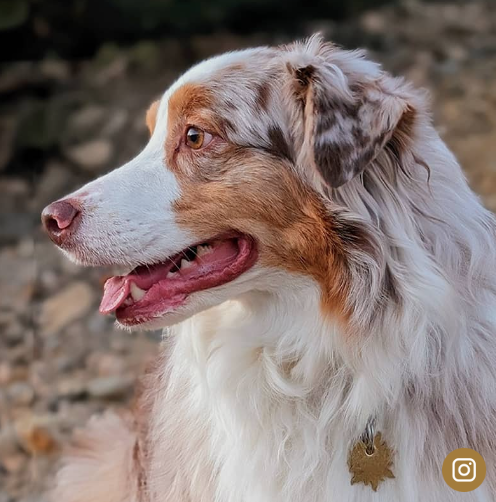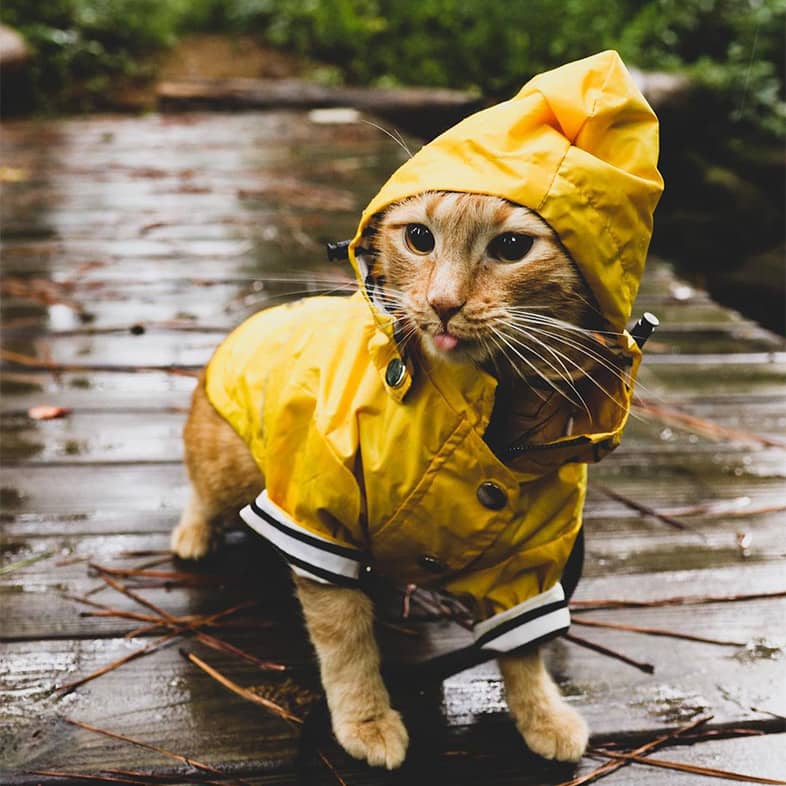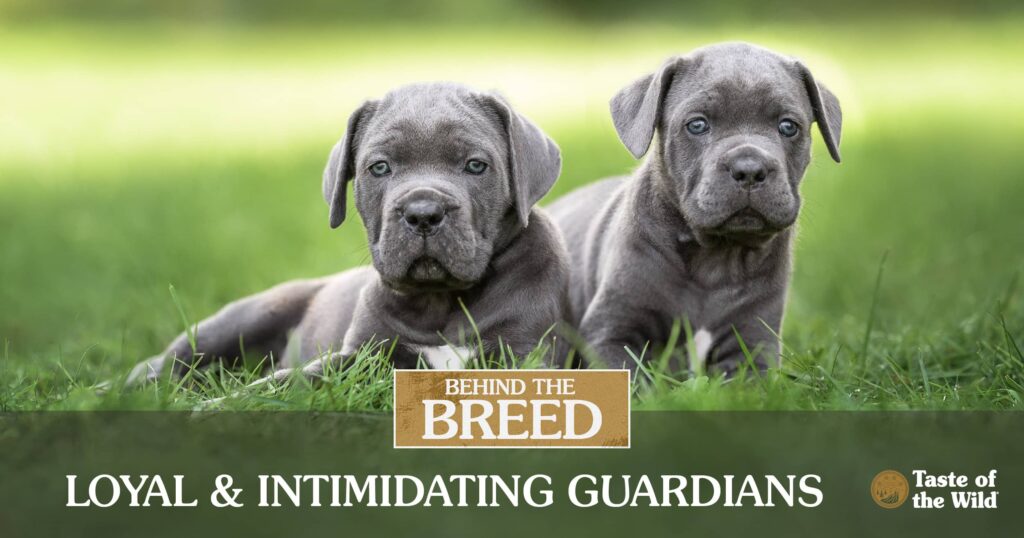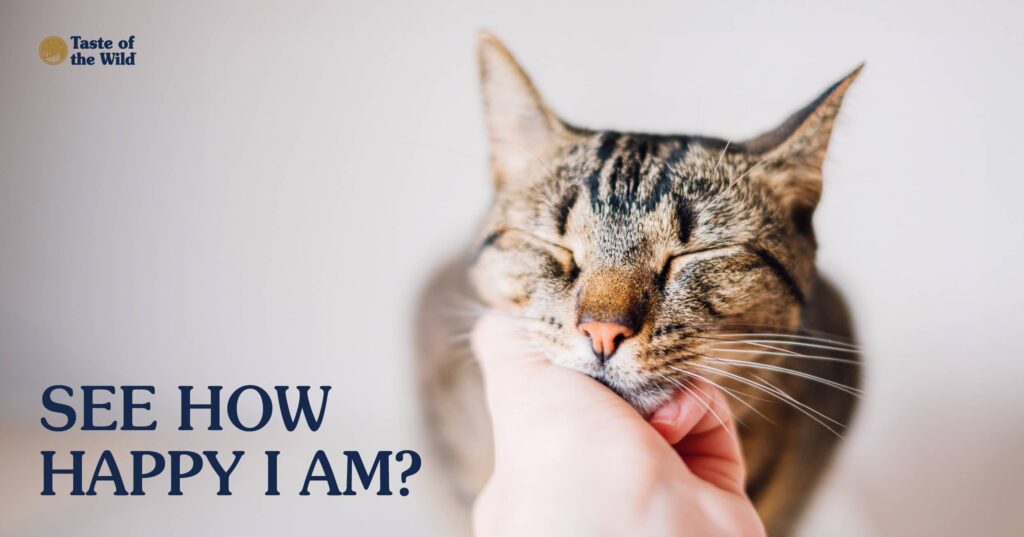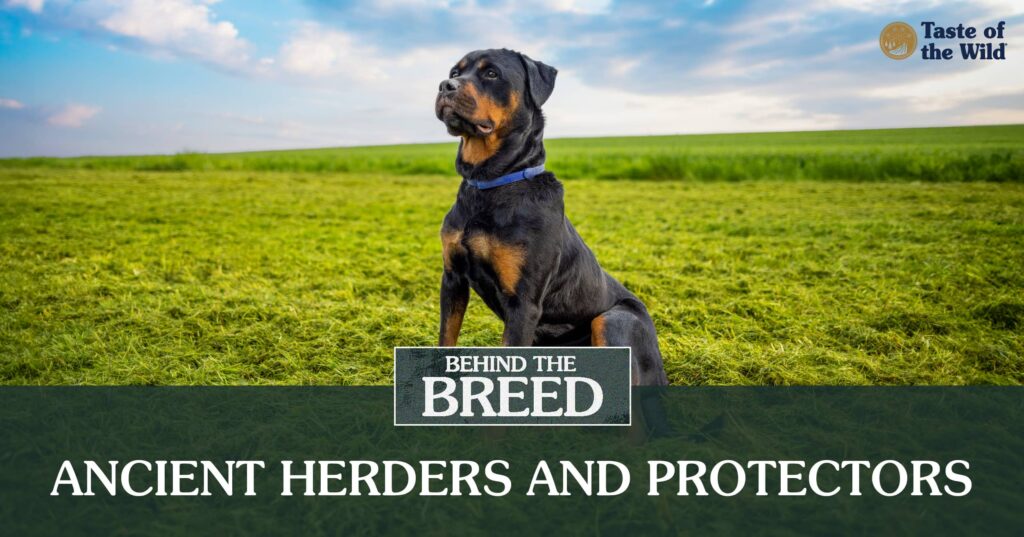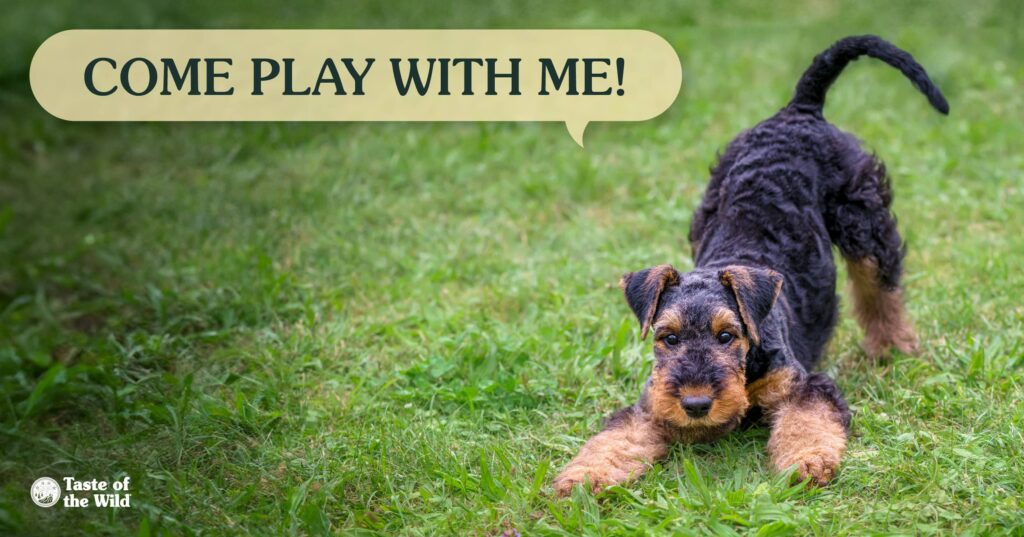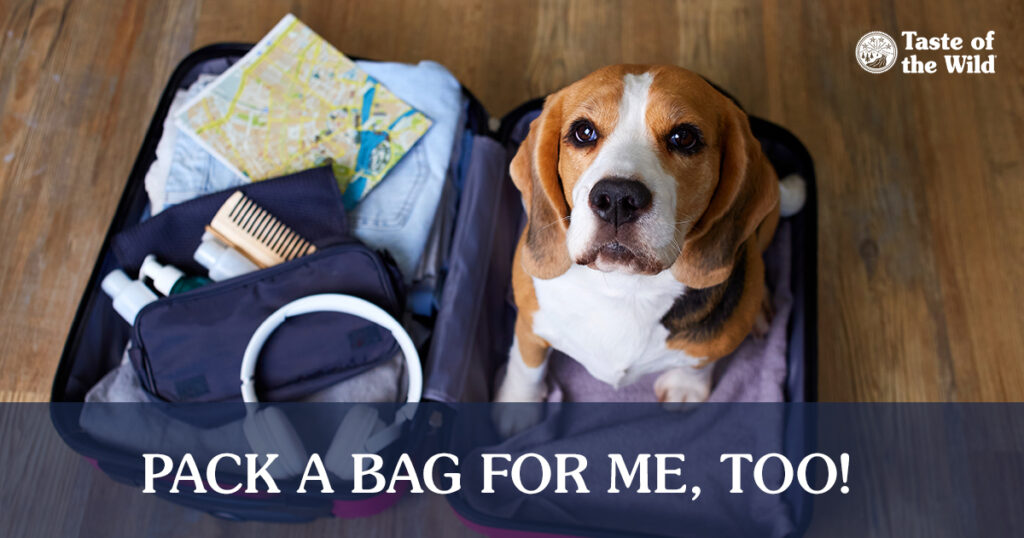Have you ever wondered where a dog breed originated from? In our “Behind the Breed” series we’ll dive into the history, personality and physical appearance of a particular breed. We’ll also cover some of the FAQs about the breed and maybe some fun facts, too!
The Rottweiler is considered one of the most ancient breeds; their background can be traced to the Romans who brought their ancestors, believed to be mastiffs, to Germany. They were used as herding dogs by the Roman army to help move their livestock. These dogs mated with native dogs and became the cornerstone for what we now know as Rottweilers. The breed continued to be used in Germany to drive cattle and pull carts for farmers and butchers, making them muscular dogs. The dogs were known in southern Germany as “Rottweiler Metzgerhund,” meaning butcher’s dogs (boxers were also known as butcher’s dogs in Germany). Rottweilers, also known as Rotties, are now a popular breed in the U.S. and are known for their loyal and protective nature.
Be Warned a Rottweiler Puppy Will Grow…and Grow
A Rottweiler puppy or even an adult dog won’t eat you out of house and home, but Rottweiler puppies do have huge appetites and will grow rapidly in their first year. No matter the breed, it is always recommended to consult with a veterinarian about your dog’s diet so you can help them maintain a healthy weight. Your vet can also tell you the amount of dog food your dog should be eating depending on their age, size, weight and level of activity.
Rottweiler Size
Rottweilers are known for their impressive strength and sturdy build, which come from their history as working dogs, particularly in herding, drafting and guarding roles. Rottweilers are a large breed with a strong, muscular build.
Rottweiler Weight
Rottweiler size is impressive and can vary. Similar to the bullmastiff and cane corso breeds, males typically stand about 24 to 27 inches tall at the shoulder and weigh between 95 to 125 pounds. Female rottweilers are a bit smaller, standing around 22 to 25 inches and weighing 80 to 100 pounds.
What Is the Life Expectancy of a Rottweiler?
Rottweilers typically live around 8 to 10 years. Factors such as genetics, diet, exercise and regular veterinary care can influence the Rottweiler life span. Some Rottweilers may live longer with proper care, while others may have health problems that can shorten their lives.
Health Issues to Be Aware of in the Rottweiler Breed
Like some large breeds, Rottweilers are prone to health issues such as hip dysplasia, elbow dysplasia and heart conditions. Regular checkups help identify health issues early, which can lead to more effective treatment. Understanding the Rottweiler life span and health can help owners provide the best care and ensure a healthy, happy life for their dog.
Like many other large dogs, Rottweilers can experience health problems related to their joints, such as the rupture of their cranial cruciate ligament, similar to how a human athlete can tear their ACL. If the cranial cruciate ligament in the dog’s knee is torn, it will cause pain and lameness. There are ways you can help avoid this by reducing excess weight, encouraging low-impact exercises and preventing high-impact activities.
Another health condition is subvalvular aortic stenosis (SAS), a common, inherited heart disease in Rottweilers and other large-breed dogs. According to the Merck Veterinary Manual, subaortic stenosis most commonly occurs in large breed dogs such as boxers, German shepherds, golden retrievers, Newfoundlands and Rottweilers. If your dog has been diagnosed with SAS or any other heart condition, it is recommended that you consult with a veterinary cardiologist to discuss treatment options.
What to Know About the Rottweiler Temperament
Much like German shepherds, rottweilers are often perceived as tough dogs, but with proper training and socialization, they can exhibit a calm, affectionate and loyal nature. While they may be reserved around strangers, they form strong bonds with their owners and families, displaying affection and loyalty. Their innate guarding instincts make them exceptional protectors and devoted companions.
Due to their natural protective instincts, strength and intelligence, Rottweilers excel as guard dogs. Their intimidating size and confident demeanor act as deterrents to potential intruders. These dogs form deep bonds with their families, motivating them to defend their home and loved ones. Their alertness and acute senses enable them to quickly detect unusual activity, and their wariness of strangers makes them keen protectors.
According to the American Rottweiler Club (ARC), Rottweilers are intelligent dogs and have a desire to please, making them wonderful family pets — provided they undergo consistent training and positive reinforcement at an early age.
Are Rottweilers Good With Kids?
Rottweilers can be very good with kids, especially when they are properly trained and have early socialization. They are known for their loyalty and protective instincts, which often extend to their family members, including children. A Rottweiler personality is generally affectionate and can be playful, making them great companions for kids. However, due to their size and strength, it’s important to supervise interactions and teach children how to interact respectfully with the dog.
Do Rottweilers Shed a Lot?
Grooming a Rottweiler is essential for maintaining their distinctive appearance and coat health. A Rottweiler’s coat is short and dense, and requires regular brushing because they do shed a lot. Ideally, brush once a week or even daily to remove loose hair and minimize heavy shedding. While they don’t need frequent baths, occasional washing with a dog-specific shampoo helps keep their skin healthy and free of dirt. Routine nail trimming, usually every 3–4 weeks, is important to prevent discomfort and walking issues. Additionally, regular ear cleaning and dental care contribute to their well-being. To maintain your Rottweiler’s oral hygiene, it’s beneficial to brush their teeth at least three times a week. This helps to prevent tartar buildup and eliminates harmful bacteria. Overall, a consistent grooming routine not only enhances a Rottweiler’s striking appearance but also promotes their health and happiness.
The American Kennel Club (AKC) breed standard describes Rottweilers as black with rich, rust- to mahogany-colored markings on their cheeks, muzzle, chest and legs. Quantity and location of rust markings are important. Although other color variations exist, the iconic black and tan markings are a clear indicator that you are looking at a Rottweiler.
Tips on How to Socialize Rottweiler Puppies
Socializing puppies is crucial for their development into well-rounded adult dogs. It’s best to start early, ideally between 3 to 14 weeks of age, by exposing them to different environments, sounds and adventures. It’s important to introduce them to various people, including children and other dogs of different sizes and temperaments.
Making Rottweiler training a fun and positive experience is a must. Use treats and praise to reinforce good behavior during these interactions. Take them on walks in busy areas, visit dog parks and consider enrolling them in puppy classes, to encourage play and social interaction or obedience training. Always monitor their reactions and ensure that each experience is positive to build their confidence and help them develop strong social skills. It’s also good to provide adequate mental stimulation so that they don’t become bored. Overall, with the right training and socialization, Rottweilers can be loyal and loving companions.
A Few Interesting Facts About the Rottweiler Dog Breed
- It is believed that the first Rottweiler came to the U.S. in the late 1920s with German emigrants.
- The American Rottweiler Club was established in 1973 and is the only Rottweiler club recognized by the AKC.
- Rottweilers have been featured in movies. One of the more memorable roles for a Rottweiler was in the 1989 comedy National Lampoon’s Christmas Vacation by a dog named Snot.
- Children’s book author and illustrator Alexandra Day used a Rottweiler as the main character in the Good Dog, Carl series.


